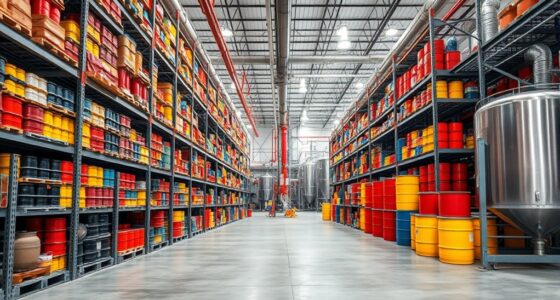Global sulfur supply chains are facing growing risks from environmental policies, geopolitical tensions, and market fluctuations. Major producers in China, the US, Russia, and Canada dominate the market, but supply disruptions can happen due to trade restrictions, natural disasters, or political unrest. Transportation delays and shifting regulations add to the fragility. Staying informed about these challenges helps you understand how stakeholders are working to bolster resilience and ensure stable availability—more insights lie ahead if you keep exploring.
Key Takeaways
- Major sulfur producers are concentrated in China, the US, Russia, and Canada, limiting diversification and increasing supply risks.
- Geopolitical tensions, trade restrictions, and natural disasters have caused recent disruptions in sulfur supply chains.
- Environmental regulations and emission control technologies are transforming sulfur production and management practices globally.
- Market volatility and fluctuating demand impact sulfur prices and strain supply stability across regions.
- Diversification strategies, technological innovations, and risk assessments are essential for enhancing supply chain resilience.
Overview of Global Sulfur Production and Consumption
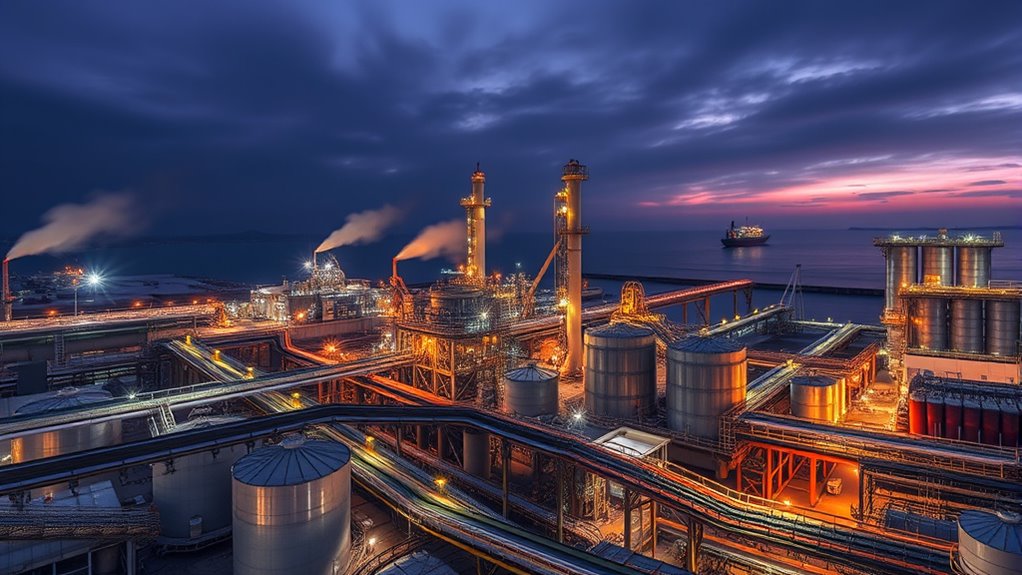
Sulfur is a vital industrial mineral, with global production and consumption closely linked to various sectors such as agriculture, chemical manufacturing, and energy. As demand grows, so does concern over its environmental impact, particularly air pollution from sulfur dioxide emissions. Regulatory policies worldwide aim to limit these emissions and promote cleaner production methods, shaping how sulfur is mined, processed, and used. These policies can influence supply chains by encouraging stricter standards, which may increase costs or delay projects. Keeping up with evolving regulations is essential for maintaining a stable sulfur supply. Additionally, advancements in emission control technologies are transforming sulfur management practices across industries. These innovations often involve scrubbing systems that capture sulfur compounds before they enter the atmosphere. Moreover, understanding how local environmental policies vary across regions helps companies adapt their strategies effectively. Overall, understanding the balance between industrial needs and environmental responsibility is key to managing the dynamic landscape of global sulfur production and consumption.
Key Players and Geographic Distribution of Supply
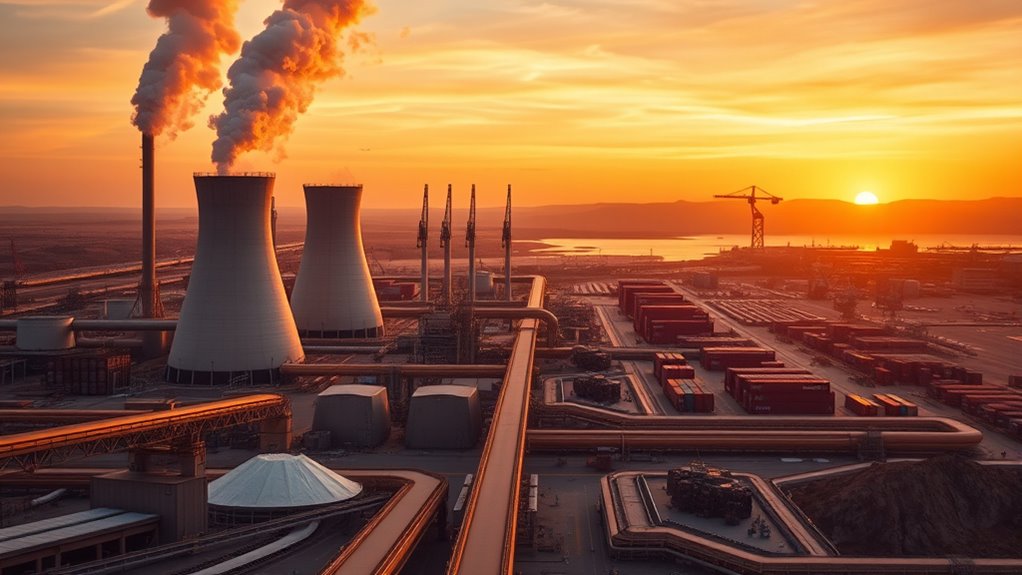
The global sulfur supply chain is shaped by a handful of key players and their geographic distribution. Major producers are concentrated in countries like China, the United States, Russia, and Canada, which hold significant reserves and processing capacity. This concentration limits supply chain diversification and amplifies geopolitical risks, as disruptions in one region can ripple globally. You should recognize that diversification efforts aim to reduce reliance on a few sources, but geopolitical tensions and trade restrictions still threaten supply stability. Countries with abundant sulfur reserves often influence global prices and availability. Understanding where supply originates helps you assess vulnerabilities and plan for potential disruptions. Additionally, the development of renewable and alternative sources is increasingly being explored to enhance supply resilience. Recognizing these challenges highlights the importance of supply chain resilience and proactive strategies to safeguard critical materials. Efforts to develop sustainable extraction methods also contribute to reducing environmental impacts and ensuring long-term supply stability.
Factors Influencing Sulfur Supply Stability
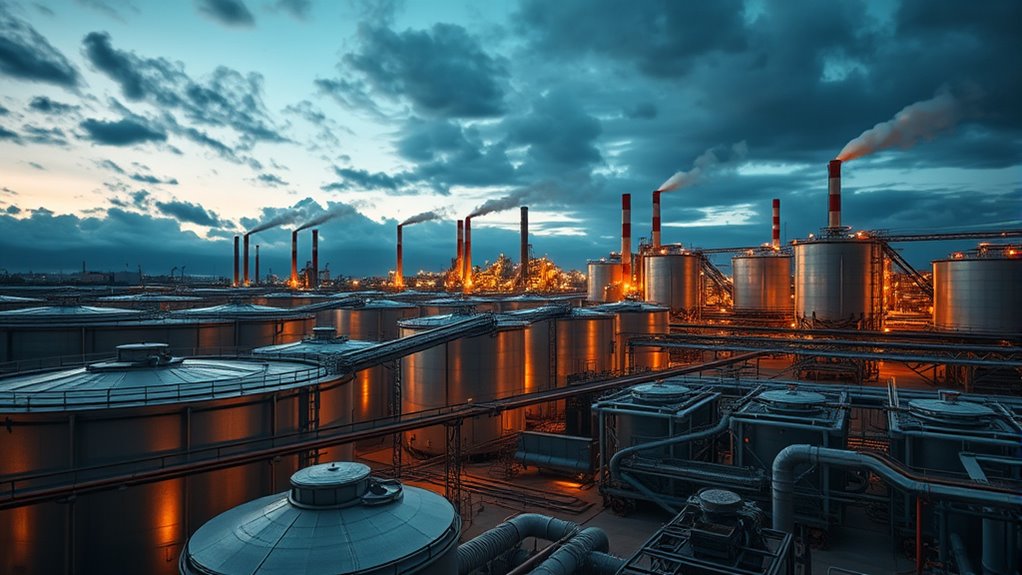
Multiple factors influence the stability of sulfur supplies, and understanding these can help you anticipate potential disruptions. Market volatility can cause price swings that impact production and trade flows, making supply less predictable. Geopolitical risks, such as conflicts or trade restrictions, can interrupt key supply routes or sources, leading to shortages. Additionally, dependency on specific regions or producers increases vulnerability to regional instability. Environmental regulations may also tighten, restricting sulfur extraction or processing. Fluctuations in demand, driven by industry shifts or economic changes, can strain supply chains. Being aware of these factors helps you assess risks and develop strategies to ensure a reliable sulfur supply. Supply chain resilience is increasingly vital in addressing these vulnerabilities. Moreover, advancements in sustainable sourcing techniques can help diversify supply sources and mitigate some of these risks. Incorporating spiritual awareness into risk management approaches can foster a more holistic understanding of interconnected global factors influencing resource stability.
Major Disruptions and Recent Supply Chain Challenges
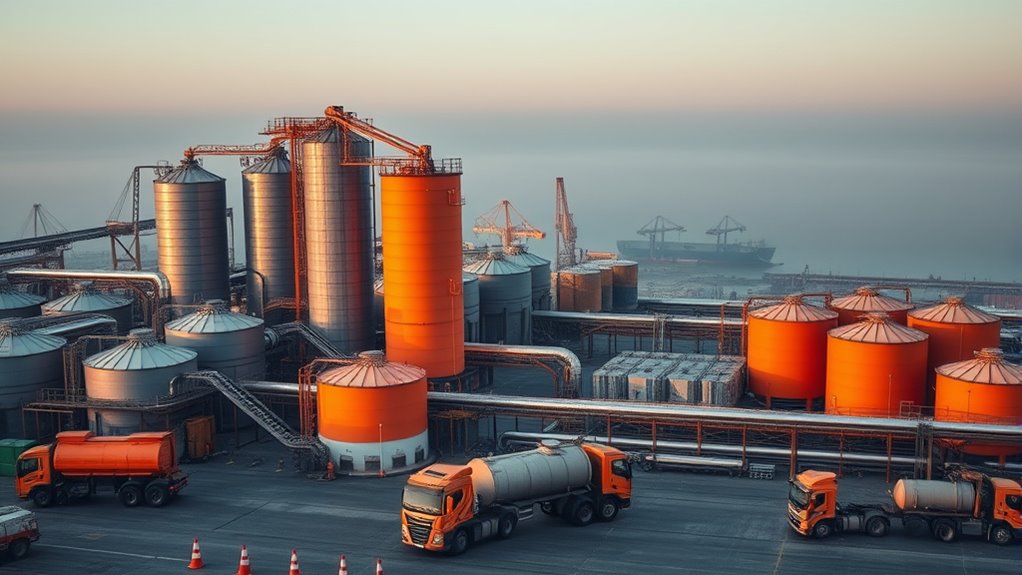
Recent disruptions have highlighted vulnerabilities in sulfur supply chains, with geopolitical tensions and unexpected events causing significant challenges. Transportation delays have become more frequent, disrupting the timely movement of sulfur from producers to consumers. These delays are often driven by geopolitical tensions that restrict trade routes, impose sanctions, or create political instability in key supplier regions. Such tensions lead to unpredictable supply interruptions and increase costs across the supply chain. Additionally, natural disasters and logistical failures have compounded these issues, making supply chains more fragile. As a result, companies face increased uncertainty and must contend with fluctuating prices and unreliable delivery schedules. These disruptions expose the fragility of the current sulfur supply infrastructure and underscore the need for more resilient systems. Supply chain resilience is increasingly recognized as essential to mitigating these risks and ensuring stable sulfur availability.
Strategies for Enhancing Resilience and Future Outlook
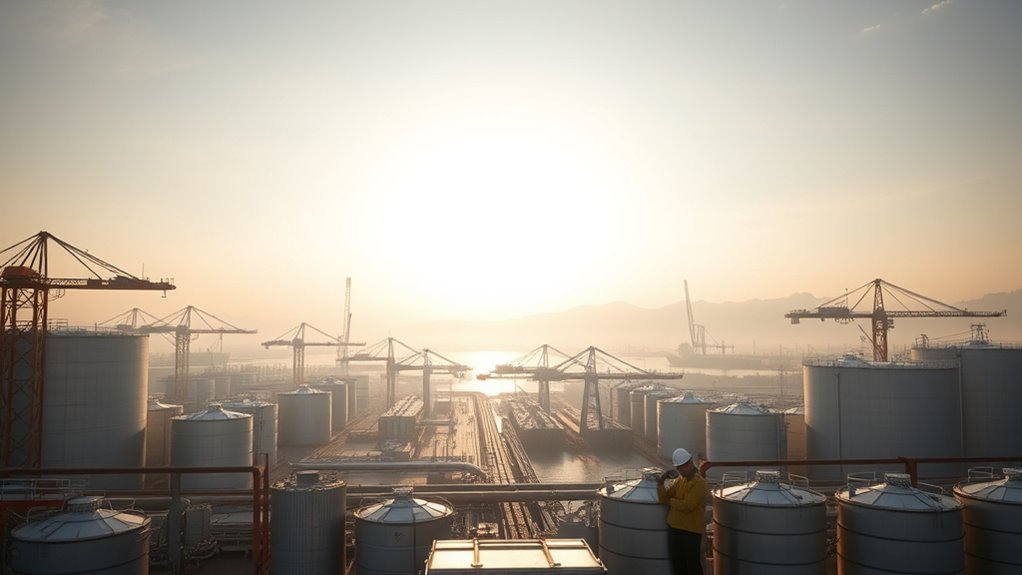
To build a more resilient sulfur supply chain, you must adopt proactive strategies that minimize vulnerability to disruptions. Embracing alternative sourcing options guarantees you’re less dependent on a single supplier or region, reducing risks from geopolitical issues or natural disasters. Investing in technological innovation can streamline supply processes, improve forecasting, and detect potential issues early. Additionally, diversifying transportation routes and storage facilities enhances your capacity to adapt swiftly to unforeseen events. Forming strategic partnerships can also provide access to new markets and shared resources, boosting overall resilience. Regular risk assessments help you identify vulnerabilities and adjust strategies accordingly. Conducting energy efficiency evaluations of your supply chain operations can reveal additional areas for optimization and risk mitigation. Incorporating mindfulness principles such as goal setting and self-reflection can foster a proactive mindset towards supply chain management. By implementing these measures, you prepare your supply chain for future challenges, ensuring stability and sustainability in sulfur sourcing.
Frequently Asked Questions
How Does Sulfur Trade Impact Global Environmental Policies?
You see, sulfur trade influences global environmental policies because countries adopt stricter environmental regulations to reduce pollution from sulfur emissions. These policies often shape trade diplomacy, encouraging nations to cooperate or impose tariffs on sulfur exports. As you navigate these dynamics, you realize that responsible trade practices help balance economic growth with environmental protection, emphasizing the importance of aligning sulfur trade strategies with international environmental commitments.
What Role Do Alternative Materials Play in Sulfur Demand Reduction?
Did you know that nearly 30% of sulfur demand could be reduced with effective recycling initiatives? You play a key role in supporting alternative sources, like industrial waste or bio-based materials, which lessen reliance on traditional sulfur supplies. By embracing these alternatives, you help cut environmental impacts and promote sustainable practices. Your choices can push industries toward using innovative materials, ultimately making sulfur demand more resilient and eco-friendly.
Are There Emerging Technologies That Could Disrupt Sulfur Production?
Emerging technologies like innovative extraction methods and advanced recycling technologies could substantially disrupt sulfur production. You might see more efficient processes that reduce reliance on traditional mining, lowering environmental impact. Recycling technologies, in particular, can recover sulfur from waste streams, decreasing demand for raw materials. These innovations could reshape the sulfur market, making supply more sustainable and less vulnerable to geopolitical or resource-based disruptions.
How Do Geopolitical Tensions Influence Sulfur Supply Chain Security?
Oh, the irony is rich—geopolitical tensions seem to love testing your supply chain resilience. Trade restrictions can suddenly tighten, making sulfur harder to get, even when demand is high. You might think stability would be a given, but these tensions keep disrupting supply chains, forcing you to adapt quickly. Ultimately, they remind you that geopolitics isn’t just political chatter; it’s a real factor shaping sulfur availability and security.
What Are the Long-Term Economic Implications of Sulfur Supply Fluctuations?
You’ll face long-term economic impacts from sulfur supply fluctuations, which can threaten market stability and cause price volatility. When supplies are inconsistent, industries relying on sulfur, like agriculture and chemicals, may see increased costs and unpredictable pricing. This instability can disrupt investment planning and trade, ultimately hindering economic growth. Staying prepared for supply shifts helps mitigate risks and maintain market stability over time, safeguarding your financial interests.
Conclusion
As you consider the global sulfur supply, it’s clear that ongoing disruptions and shifting key players often coincide, risking stability. You’ll want to stay informed about industry changes and resilience strategies, as these factors intertwine, shaping the future. The delicate balance between supply and demand reminds you that even small disruptions can have far-reaching effects. Ultimately, understanding these interconnected risks helps you better navigate the evolving landscape of sulfur supply chains.

